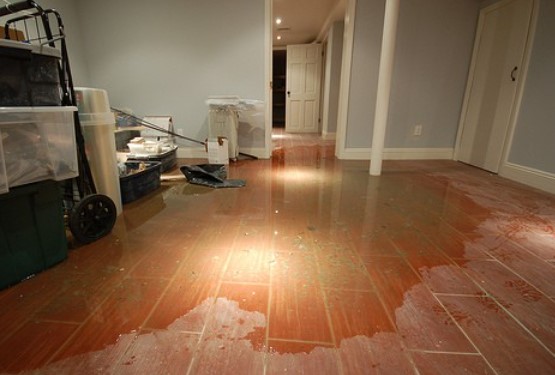Responding to Emergency Water Damage: Immediate Steps to Minimize Loss

Water damage emergencies can strike unexpectedly, causing significant damage to homes and properties. Whether it’s due to a burst pipe, flooding, or a leaking roof, swift action is crucial to minimize the extent of the damage and prevent further complications. We will immediately explore the essential steps you should take when faced with a water damage emergency, ensuring you protect your home and belongings.
Assessment and Safety Measures
Upon discovering water damage in your home, the priority is to assess the situation and ensure safety. If the water source is from a burst pipe or appliance, immediately shut off the main water supply to prevent additional water from flooding your property. Electrical safety is paramount; if water has reached electrical outlets or appliances, turn off the electricity at the breaker box to avoid the risk of electrocution. Use caution when navigating through flooded areas, as slippery surfaces and unseen hazards could pose threats.
Water Extraction and Drying
After securing safety, the next critical step is to begin removing water and initiating the drying process. Use a wet vacuum or pump to extract standing water from affected areas. Towels and mops can also be utilized to soak up excess water from floors and surfaces. Open windows and doors to promote air circulation, which aids in drying out damp areas. Utilize fans and dehumidifiers to accelerate the drying process, focusing on areas prone to retaining moisture such as carpets, upholstery, and wall cavities.
Salvaging Belongings and Materials
As water can quickly damage personal belongings and building materials, salvaging items affected by water is a priority. Remove items such as furniture, rugs, and electronics from flooded areas to prevent further saturation and potential mold growth. Wipe down and dry these items promptly to mitigate water damage. Porous materials such as carpets and upholstery may require professional cleaning or replacement if they cannot be thoroughly dried. Inspect structural elements like drywall and insulation for signs of water saturation and damage, which may require professional assessment and repair.
Preventing Mold Growth
One of the most significant risks associated with water damage is mold growth, which can begin within 24 to 48 hours under favorable conditions. To inhibit mold proliferation, thoroughly dry all affected surfaces and materials. Use disinfectants or antimicrobial solutions to clean surfaces exposed to water. Monitor humidity levels in your home, aiming to keep them below 50% to discourage mold development. Consider consulting with a mold remediation specialist if extensive water damage has occurred to ensure thorough cleaning and treatment.
Contacting Professional Restoration Services
While immediate action is crucial in mitigating water damage, consulting with The Steam Team near Austin can provide expertise and resources to address more severe incidents. Restoration professionals possess specialized equipment such as industrial-grade pumps, moisture detectors, and drying tools to manage water damage restoration effectively. They can conduct thorough assessments to identify hidden water sources and ensure comprehensive drying and repair processes. Additionally, restoration experts can assist in documenting the damage for insurance claims, facilitating a smoother recovery process.
Monitoring and Documenting Damage
After initial mitigation efforts, continue monitoring the affected areas closely for any signs of lingering moisture or secondary damage. Even after visible water has been removed, residual moisture can persist in building materials and structural components. Use moisture meters to assess moisture levels in walls, floors, and ceilings, ensuring thorough drying. Document the extent of the damage with photographs or videos before beginning cleanup and restoration efforts. This documentation is essential for insurance claims and can serve as evidence of the damage incurred.
Addressing Structural Repairs
Once the affected areas are thoroughly dried and cleaned, evaluate the extent of structural damage that may have occurred. Water damage can weaken building materials such as drywall, wood framing, and insulation, necessitating repairs or replacements. Inspect for signs of warping, buckling, or discoloration in structural components, which may indicate underlying damage. Depending on the severity, you may need to enlist the services of a contractor or construction professional to assess and address structural repairs effectively. Promptly addressing structural issues can prevent further deterioration and ensure the integrity of your home.
Read also: lemon-juice-know-home-remedies-easily-remove-dark-spots
Implementing Preventative Measures
Implement preventative measures to safeguard your home to reduce the risk of future water damage incidents. Regularly inspect and maintain plumbing systems, including pipes, fittings, and appliances, to identify and address potential leaks or weaknesses. Ensure gutters and downspouts are clear of debris and functioning correctly to direct rainwater away from your home’s foundation. Consider installing water leak detection devices and automatic shut-off valves to provide early warnings and help prevent extensive water damage. By proactively maintaining your home and implementing preventative measures, you can minimize the likelihood of water damage emergencies in the future.
Responding promptly to water damage emergencies is vital to minimize the impact on your home and belongings. By following the outlined steps—assessing safety, extracting water, salvaging belongings, preventing mold growth, contacting professional restoration services, monitoring and documenting damage, addressing structural repairs, and implementing preventative measures—you can effectively manage water damage and mitigate potential long-term consequences. Remember, swift and decisive action is critical to protecting your property and restoring normalcy after a water damage incident. Taking proactive measures now can save you from extensive repairs and restoration costs in the future.




